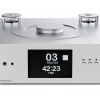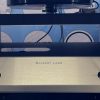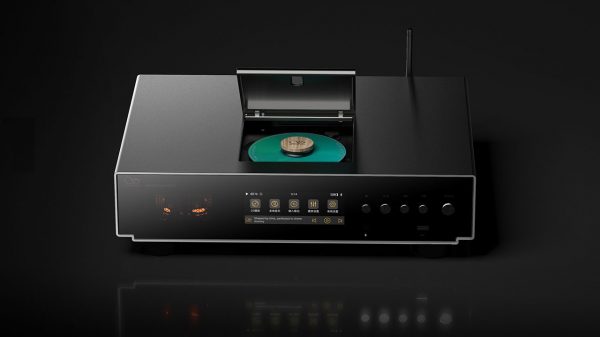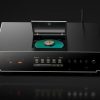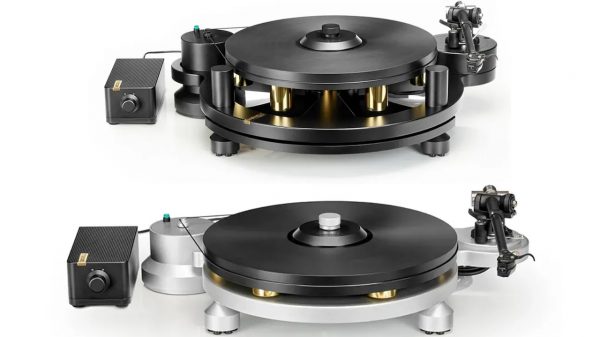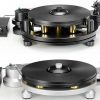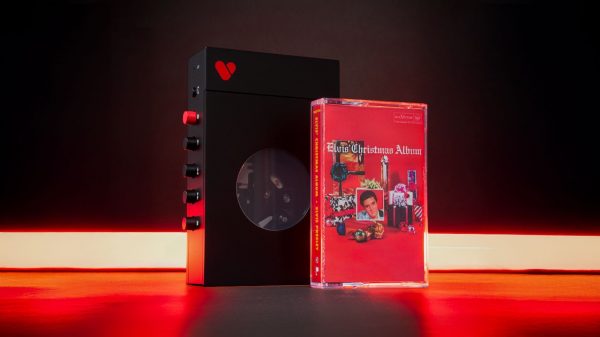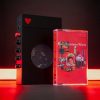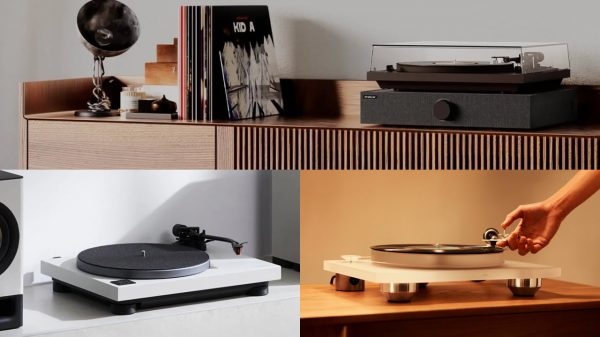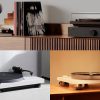Take the quiz, So You Think You’re and Audiophile and compare your results. Or, if you just want to know all the correct answers, read them all below. The test was written by Bob Rapoport, CEO of Essence Electrostats, who said, “I hope you enjoyed the quiz and found it helpful in your understanding of what it means to be an audiophile. We’ve learned a lot in the last 40 years but the dealers and magazines don’t always have your best interests in mind when they tell you what they think, too many conflicts of interest exist now, you are on your own to learn this stuff. I am happy to discuss any of this in more detail and provide good examples to prove what I am telling you… in the end its up to you to decide what to do with the information.”
The phrase “high fidelity” means: True to the original master recording.
In 1977 Bob Rapport was a co-founder of Mobile Fidelity Sound Lab. They made the first “audiophile” albums, known as “Original Master Recordings” because they came closer to matching the original masters than the commercial versions. Note the mast-head on the album covers. By half-speed mastering and cutting a deeper groove, we gained another 6 dB dynamic range, we play these versions at higher level for a cleaner playback on good equipment. No, they didn’t equal the original master recordings they came from, but they were better by far than the commercial versions of the same albums.
(True/False) The term “sweet-spot” refers to the one listening position where both channels arrive simultaneously to create the illusion of the instruments and voices suspended in the space between the two speakers realistically.
True: This seems obvious, you can’t hear a good stereo image unless both channels arrive at the same time at your ear, sitting equidistant to the speakers as they are too themselves is required. Headphone listening always put you in the sweet-spot, a good benchmark for comparison.
(True/False) The storage media of each generation (vinyl LP, tape, CD, etc.) have space limitations that require bandwidth and dynamic range peak limiting (compression) that prevent them from being a true one-to-one copy of the original master recording.
True: Vinyl albums gave us 40 minutes of playtime, 20 minutes per side of a 12″ disc. The record labels had to limit the bandwidth below 100 Hz and above 16KHz and used peak limiting to compress the dynamic range to 60 dB to make 12 songs fit. CDs improved that to 74 minutes for 12 songs on a single side of a 5″ disc with full bandwidth but still compressed dynamic range to 90 dB, a huge jump from vinyl so we could really play them louder and cleaner but still not identical to the original master recording. DVD came along and increased the storage capacity from 700 mb of a CD to 5 Gigabits and then Meridian Lossless Packing doubled that space to 10 Gigabits, thats when SACD and DVD-A came along. You had to have a DVD player specialized for those formats, not very common in those days and expensive too. Next we got the Blu-ray disc in 2006, with a 50 Gigabit capacity, no compression was needed to fit the complete original master recording on the disc at 120 dB dynamic range, identical to the original master recording. As you can imagine, the studios and record labels were afraid to do that so they created a two-way security protocol authentication process called HDMI with HDCP so we can’t copy that level of resolution, we can only listen. This high speed connection made hearing a one-to-one copy of the original LPCM 24/192k master possible at home.
(True/False) The storage capacity of today’s Blu-ray, SACD, and DVD-A is large enough to carry a one-to-one copy of the original LPCM master recording at 24/192K or higher.
True: Answered in previous question.
(True/False) Without the full bandwidth and dynamic range of the original master, a recording is compressed and can’t play as loud as the original studio version.
True: Same answer as above just to be sure you get this, compression is why MP3 files can’t be played loud on a good stereo system. They give it away for free and for many who just listen on headphones, its enough. But MP3 is the equivilant of a vinyl album in terms of dynamic range, just 60 dB.
(True/False) To hear the highest fidelity available, your system should have an HDMI input/output for a secure copy-protected connection that permits the high res content to pass from one component to the next.
True: This is the truest thing to know if you want to hear the best sound available today, without an HDMI connection, you can’t gain access to the highest resolution content available today. Yes, USB is good for downloading hi res content from sites like HD Tracks and Music Direct but the provenance of that content is in doubt. Did they just upsample the CD to 24/192K and resell you a better version or is it the one to one copy of the original master? The Essence HDACC at $599 MSRP is a 24/192K upsampling DAC with USB and HDMI for legacy analog systems so you can upsample your own CDs, download hi res tracks, or play the Blu-ray / SACD version that is a one-to-one copy of the original master recording with 120 dB dynamic range.
The most expensive parts of any high performance power amp are: The chassis and heat sink.
Class A/AB amps are very in-efficient, throwing away 50-80% of the utility power as heat. Since audiophiles hate fan noise, the manufacturers are forced to increase the heat sink surface area to very large proportions, which results in a large chassis size. Fan cooled Class A/AB amps are much smaller and cheaper but they are rejected by audiophiles. The labor and materials for the large chassis with a thick front panel take up 80% of the budget and are by far the most expensive parts on those amps.
(True/False) Class D Power Amps are 90% efficient and much less expensive because they don’t need a big chassis to house all that heat sink surface area.
True: This one speaks for itself, without the huge chassis to hold all that heat sink, the price comes down significantly. Class D amps like our DPA-440 at $999 MSRP for 220 watts per channel at 4 ohms, run cool, turning 90% of the utility power into watts you can hear and sell for 1/4 the price of Class AB amps, with better specs and sound quality, what goes in comes out at high level, the only people bad-mouthing the sound of Class D amps are the guys making Class AB amps. Invest in watts, not a fancy chassis you can’t hear.
The most expensive parts of any speaker system are: The speaker cabinets.
This should be obvious, the labor and materials to make the speaker cabinet quiet are why today’s conventional speakers are so expensive. Damping out the resonance and vibration so the box makes no sound of its own is the main driver of cost. Reducing internal standing waves and baffle coloration come in next, by comparison the woofers, mid-range and tweeters, and crossover take up only 20% of the cost.
(True/False) Conventional dynamic speakers compromise performance by adding cabinet resonance and vibration, baffle coloration, and the interference effects from multiple drivers and crossover networks.
True: True again, for the reasons stated in the previous question, the biggest compromise of all is using multiple drivers to cover the whole audio frequency range. When our ears hear the same sound at the same time from more than one driver, especially in the crossover regions, we can’t localize the instrument or voice in space specifically, it drifts and becomes vague. The sound waves cross each other, disrupting linearity and creating peaks and valleys in the response that disrupt the stereo image coherence as well. Conventional speakers also lose 1/2 their output within 4 feet of the baffle on the way to your listening position, all but guarantying you will hear more reflected than direct sound at your listening position.
(True/False) The moving mass (weight) of magnet-driven conventional dynamic drivers and voice-coils create distortion by making it impossible to start and stop instantaneously with the music.
True: Lets use the Wikipedia definition of electrostatic speakers answer this one:
”Advantages of electrostatic loudspeakers include levels of distortion one to two orders of magnitude lower than conventional cone drivers in a box, the extremely light weight of the diaphragm which is driven across its whole surface, and exemplary frequency response (both in amplitude and phase) because the principle of generating force and pressure is almost free from resonances unlike the more common electrodynamic driver. Musical transparency can be better than in electrodynamic speakers because the radiating surface has much less mass than most other drivers and is therefore far less capable of storing energy to be released later. For example, typical dynamic speaker drivers can have moving masses of tens or hundreds of grams whereas an electrostatic membrane only weighs a few milligrams, several times less than the very lightest of electrodynamic tweeters. The concomitant air load, often insignificant in dynamic speakers, is usually tens of grams because of the large coupling surface, this contributing to damping of resonance buildup by the air itself to a significant, though not complete, degree. Electrostatics can also be executed as full-range designs, lacking the usual crossover filters and enclosures that could color or distort the sound.”
(True/False) The moving mass (weight) of a single .003 microns thin electrostatic diaphragm is 50 times lower than a conventional dynamic cone or dome, able to start and stop instantaneously, resulting in superior sonic clarity and resolution.
True: Same as above.
(True/False) Because electrostats are inherently directional, they deliver +5 dB more direct than reflected sound to the sweet-spot listening position, providing the localization cues necessary for a more precise stereo image than conventional dynamic speakers.
True: More from Wikipedia:
“Since many electrostatic speakers are tall and thin designs without an enclosure, they act as a vertical dipole line source. This makes for rather different acoustic behavior in rooms compared to conventional electrodynamic loudspeakers. Generally speaking, a large-panel dipole radiator is more demanding of a proper physical placement within a room when compared to a conventional box speaker, but, once there, it is less likely to excite bad-sounding room resonances, and its direct-to-reflected sound ratio is higher by some 4–5 decibels. This in turn leads to more accurate stereo reproduction of recordings that contain proper stereo information and venue ambience. Planar (flat) drivers tend to be very directional giving them good imaging qualities, on the condition that they have been carefully placed relative to the listener and the sound-reflecting surfaces in the room. Curved panels have been built, making the placement requirements a bit less stringent, but sacrificing imaging precision somewhat.”
(True/False) The human auditory system evolved over millennia for survival, able to localize the source of soft mid and high frequency sounds when heard without reflections.
True: Hearing the crack of a twig breaking in the distance and knowing its location allowed us to run the other way and survive, a key feature of human hearing also improves our localization of voices and instruments in space when listening to music.
(True/False) Listening on sealed headphones puts you in the sweet-spot and delivers the pure sound of the recording without the interference effects of room reflections, providing the listener with the purest playback as a benchmark for any full range speaker.
True: This one seems obvious, use the sealed headphone as a benchmark when judging a loudspeaker, the closer you can get to the pure sound of the recording the better it will sound on a real speaker in your room.
(True/False) Electrostats outperform conventional speakers when it comes to matching the sealed headphone listening experience because they minimize the interference effects and reflected sounds.
True
(True/False) Full range electrostatic speakers come the closest to the theoretical ideal design, a one-way full-range dipole line source.
True: Since the 1950’s, acousticians have defined the ideal transducer as a single full range one-way point source. The electrostat goes further, creating a line source dipole that radiates sound both back and front, like the plucked string of a violin or one key of a piano.
(True/False) Electrostats work by following the most basic law of nature; opposite forces attract while like forces repel for a simple push/pull of the diaphragm to move the air to produce sound.
True: This means that an electrostatic speaker like the Essence has only one moving part, no magnets or cones with voice coils attached. A single diaphragm is suspended in an electrostatic field between two perforated plates called stators. As the voltage of the amplifier changes from positive to negative, the diaphragm is pushed and pulled by this invisible force to move the air resulting in the production of sound waves from the content.
(True/False) No conventional dynamic multi-driver speaker in a box can deliver the clarity, resolution, or precision stereo image of a one-way full-range line source.
True: Electrostats have a clarity and resolution that no conventional speaker can match. The problem has always been they were too big and expensive for most audiophiles to own. Essence now solves that problem with its new series of speakers that start at $1999 a pair.
(True/False) Dome tweeters with wide dispersion spray the high frequencies all over the room virtually assuring that more reflected sound will reach the listener’s ears before the direct sound of the recording, disrupting linearity and precision of the stereo image.
True: Dome tweeters have 180 degree dispersion to cover the full space in front of the speaker. The problem is that the sound reflects off the walls, ceiling, and floor so that you end up with more reflected than direct sound at your listening position, disrupting linearity and the stereo image.
(True/False) Essence Electrostats deliver the highest fidelity to the recorded sound by minimizing or eliminating the interferece effects of reflected sounds and distortion from cabinet resonance and vibration.
True: This is a fact, based on everything we know today, nothing beats an electrostat when it comes to reproducing the sound of music at home. Conventional dynamic speakers use the same technology they used 100 years ago, more refined and certainly more expensive. You have to spend a lot of money on a conventional design to achieve anything close to what can now be achieved on modern electrostats.
About Bob Rapoport:
Bob Rapoport started out in the audio industry in 1972 as a rep for Bose, Sennheiser, Phase Linear, Stanton, Rabco, Discwasher, and Bang & Olufsen. By 1974 I had my own rep company selling SAE, Design Acoustics, ESS, Adcom, RTR, Koss Electrostatics, Micro-Acoustics and Mobile Fidelity Sound Lab. He has been a hobbyist since he was 8 years old. He was the kid in school who ran the projector and PA systems at school events as well as setting up the turntables and cartridges for all his friends. In 1977 he became the global sales and marketing director for the launch of MFSL.
In 1997 Bob introduced dts discrete 5.1 channel digital audio with the Millennium 3.2.1 decoder for Laserdisc and DVD-A, with the highest dynamic range playback in audio history both on movie soundtracks and 5.1 channel CD’s that were really the first generation of DVD-A discs. This device was an add-on for Pro Logic receivers and preamps with pre-in/main-out connections.
In 2004 Bob introduced HDMI connectivity to the consumer and pro markets with the first switchers, distribution amps, and routers. This led to implementation in 2008 of Blu-ray audio, with a one-to-one copy of the original master recording for music playback in a series of concerts, both old and new, in which we audiophiles were no longer required to imagine the illusion of the live performance, we could actually watch the world’s greatest artists making their music live in high definition video at 1080p on a big screen at home, no illusion necessary. The sensory experience of hearing and seeing the music being created delivers an emotional intimacy with the artists that is greater than even being at the live event, a new art form in and of itself. If you havent heard it, get a demo soon, better content is the fastest way to improve the sound of your system.


